After a two-and-a-half-year sabbatical from the sport, Ernesto Valverde finally returned to football to take his seat in a dugout when he was appointed as the new manager of Athletic Club in La Liga.
The Basque side finished in a respectable eighth place last season under the former Valencia head coach Marcelino Toral, missing out on a spot in Europe by just four points.
Amidst the club’s presidential election during the summer, Marcelino reluctantly stood down, citing a lack of confidence in his abilities from the candidates.
The race to succeed him came down to two beloved former managers – Marcelo Bielsa and Valverde.
In the end, the latter was chosen to try and take a strong squad to the next level, with the board keen for the team to play a slightly more provocative style of football than seen during Marcelino’s tenure or his predecessor Gaizka Garitano.
While Bielsa captured the hearts and minds of the supporters inside Elland Road, Valverde has a much more impressive trophy cabinet, having led Barcelona to two league titles and two cups.
Now, in his third stint at the San Mamés, the 58-year-old is tasked with trying to make Los Leones European regulars once more.
Already, Athletic have started extremely well, picking up two wins and a draw from three matches, keeping three clean sheets in the process.
This article will be a tactical analysis and scout report of Athletic Club since Valverde’s return.
It will be an analysis, looking at the tactics that the Spaniard has implemented thus far.
Change of shape
Marcelino has an undying love for the classic and more conventional 4-4-2.
No matter how bad things get or what formation is thrown at him by the opposing manager, the experienced coach will not waver from his allegiance to the 4-4-2.
Last season, Athletic Club used the 4-4-2 in 96 percent of their total games in all competitions.
The only other structure deployed by the former manager was the 4-4-1-1 where one of the centre-forwards sits slightly deeper behind the other.
This kind of formational inflexibility and stubbornness is rarely seen in the modern game.
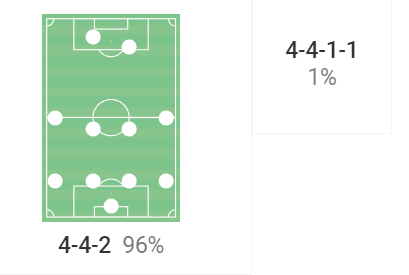
However, under Valverde, in just three competitive matches, the side have shown a much greater malleability than in the previous campaign.
On the opening night, the former Barcelona boss set his side out in a 4-3-3 base formation but went with the 4-2-3-1 for the other two league games.
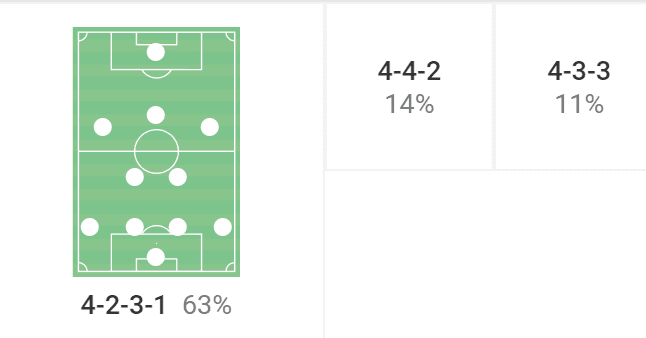
In pre-season, the 4-4-2 was experimented with as well and so Valverde clearly believes his side can be rather interchangeable with their formation depending on the strength of the opposition on the day.
The only formations not trialled by the new boss are any variant of a back three.
Not really associated with Valverde anyway, but it will be interesting to see whether the coach experiments with a three or five-man backline in the future.
Now that Valverde’s preferred formation choice so far has been established, let’s begin to break down specifically what tactics the coach has been attempting to implement at the San Mamés.
4-3-3 attacking shape
Valverde has been integrating a positional play style into his side, just like we saw from his days on the touchline of the Nou Camp.
When in the attacking phases, particularly during the build-up phase, Athletic Club’s base formation is incredibly noticeable.
Within the first fifteen seconds of Valverde’s competitive debut in the dugout for Los Leones, Athletic’s use of the Pep Guardiola-esque structure was evident.
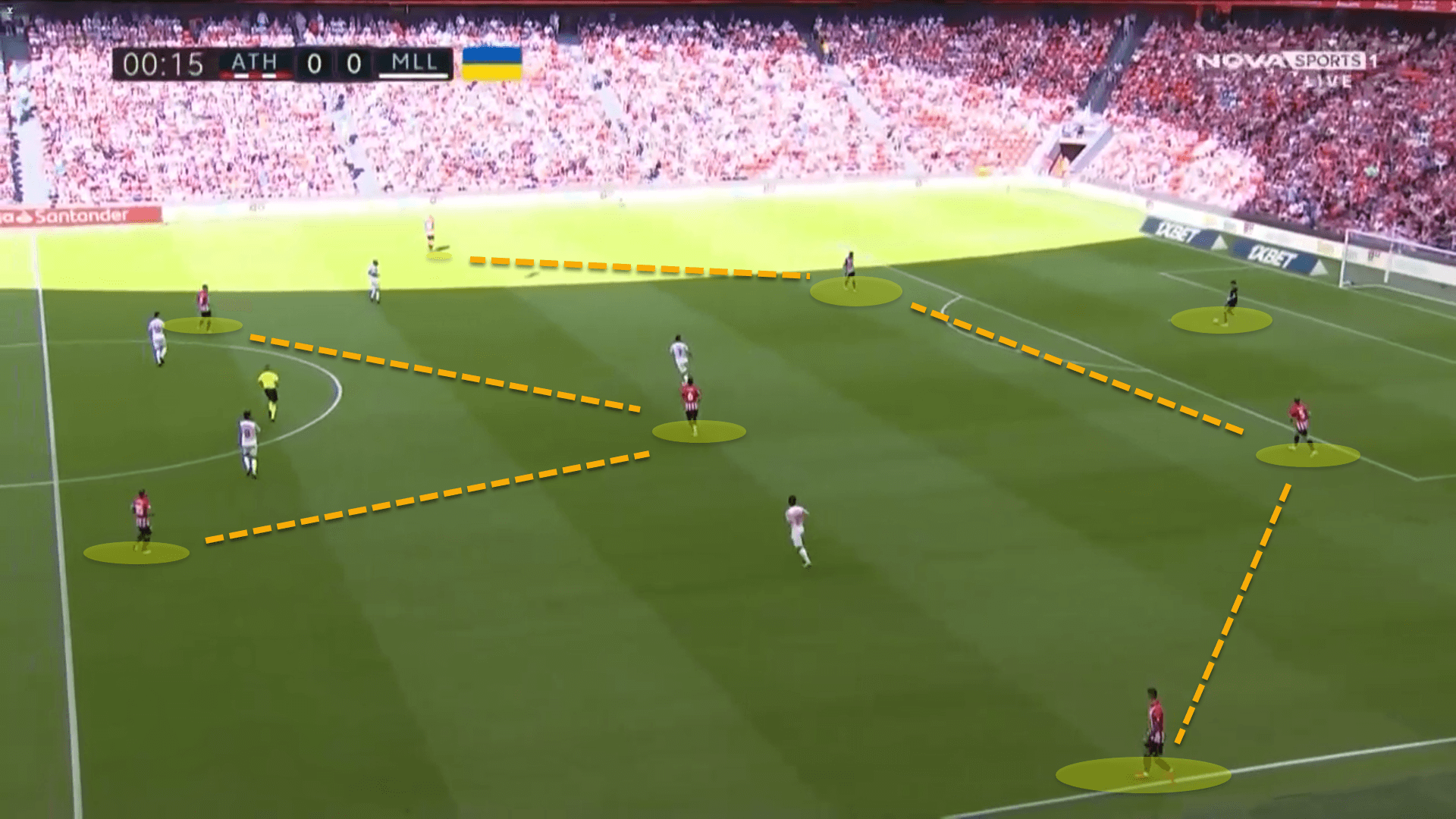
The centre-backs split wide to allow the goalkeeper to take up a more central position to be actively involved in moving the ball around.
Meanwhile, the fullbacks push slightly higher, although not too high so as to still be at a close enough distance to receive from the centre-backs.
Furthermore, the number ‘6’ sits right behind the opposition’s first line of pressure and the two advanced central midfielders push forward, sitting in between gaps in the defensive team’s midfield line, pinning them back.
Another similar trait that Valverde has lugged over from Catalonia to the Basque region has been his stubbornness to continue with this structure in the attacking phases.
Regardless of whether he deploys a 4-2-3-1, a 4-4-2, or any other back four shapes, the side will build up in a 4-3-3.
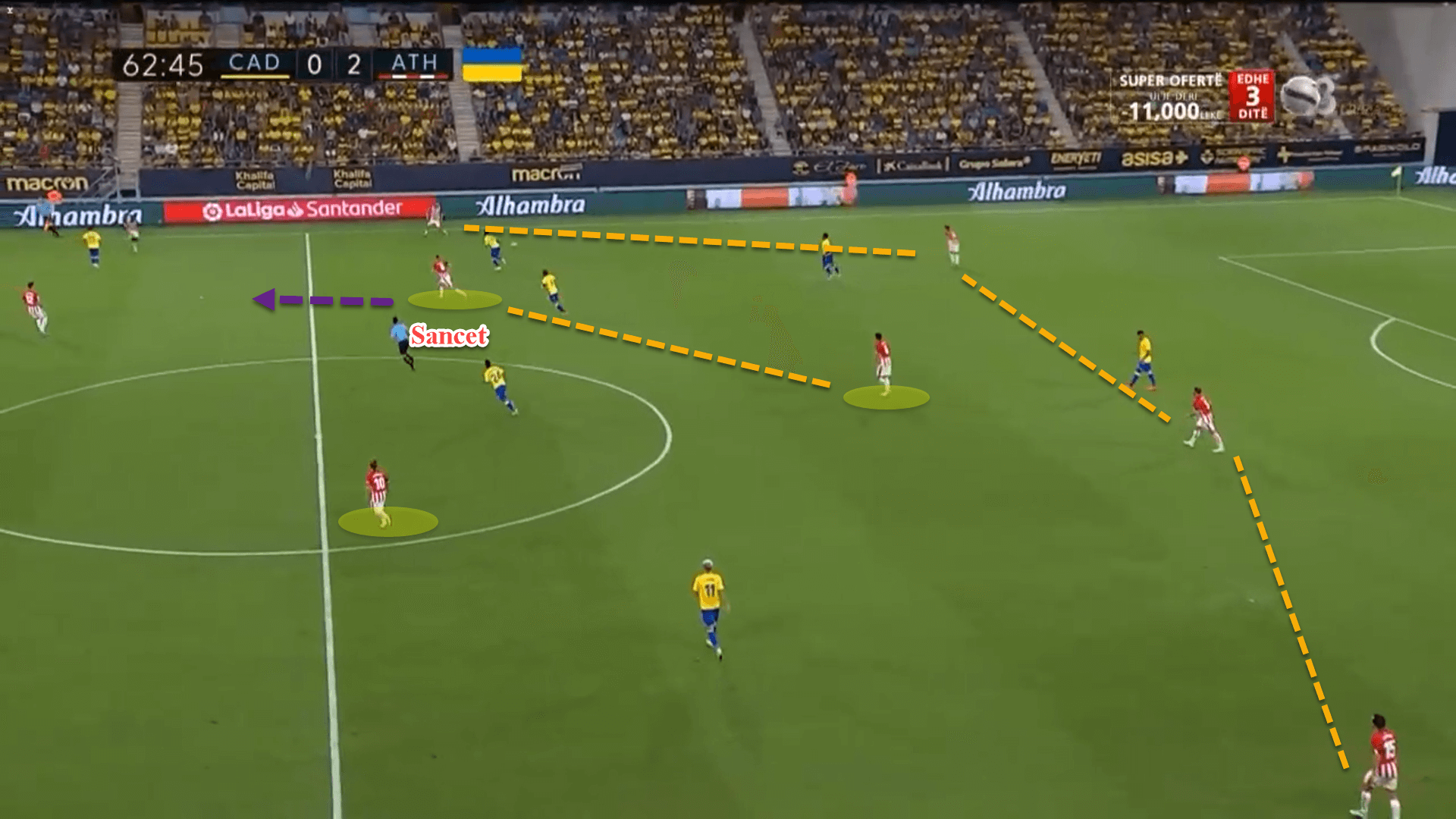
Athletic Club played with a 4-2-3-1 for the entirety of their match against Cádiz with Oihan Sancet sitting deeper alongside Mikel Vesga.
However, as shown from the example above, when The Lions were building their way through the thirds of the pitch, Sancet would move up alongside the other ‘8’, Iker Muniain, with Vesga remaining as the single pivot.
Even having an attack-minded player like Sancet, who often played as a striker last season, operating in a double-pivot indicated that Valverde’s plan was always to have the 22-year-old positioned further forward where he can cause damage.
When attempting to progress the ball from deep to higher areas of the pitch, Athletic Club do so by playing through the wide areas.
Often, to bypass the opponent’s higher press, the side will execute quick combination play to get in behind.
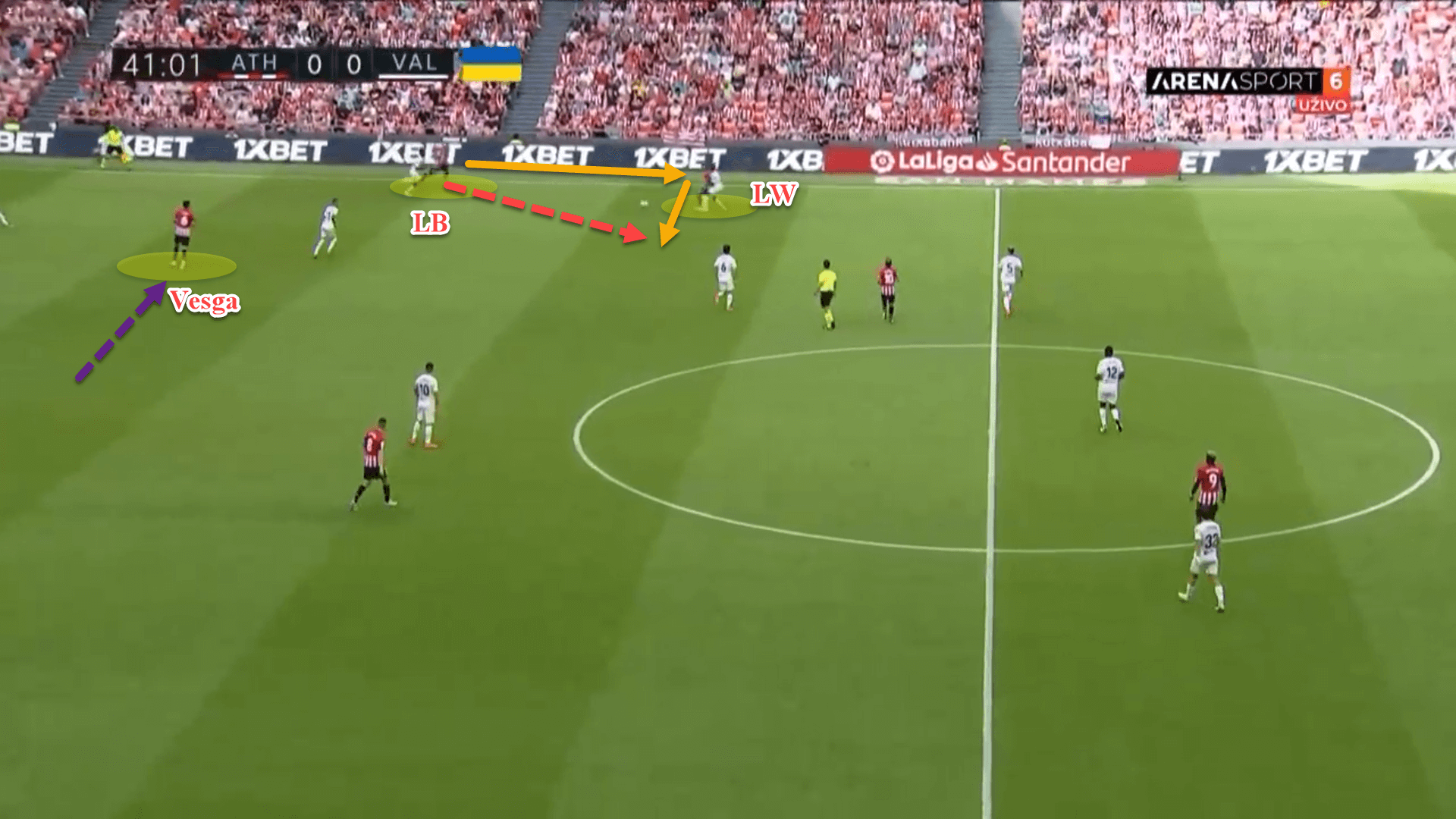
The combination play usually comes from the fullbacks, wingers and the number ‘6, who drops to the ball-side in order to act as an inside passing option.
This can be seen from the side’s pass map in their recent outing against Cádiz:
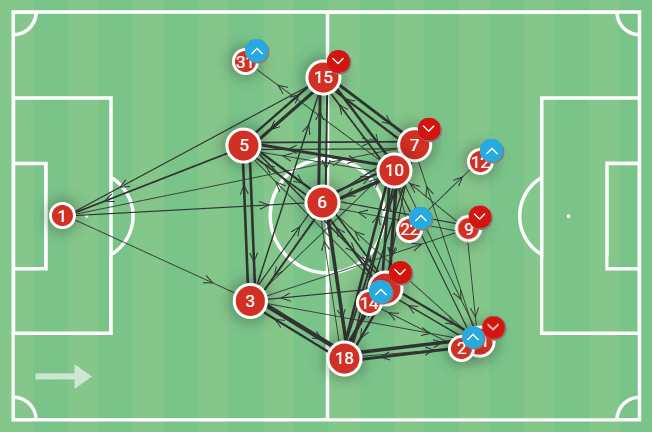
What’s evident is how strong the passing links were between the fullbacks and wingers and the backline to Vesga in the middle of the park.
There was plenty of ball circulation when trying to break down Cádiz’s defensive block, whether it be high, medium or low, as Athletic Club went on to trounce the minnows 4-0 away from home.
As play moves further up the pitch, Athletic Club’s shape changes slightly from a basic 4-3-3, but this is normal for any side using methods from the positional play school of coaching.
Formations are never a constant in possession.
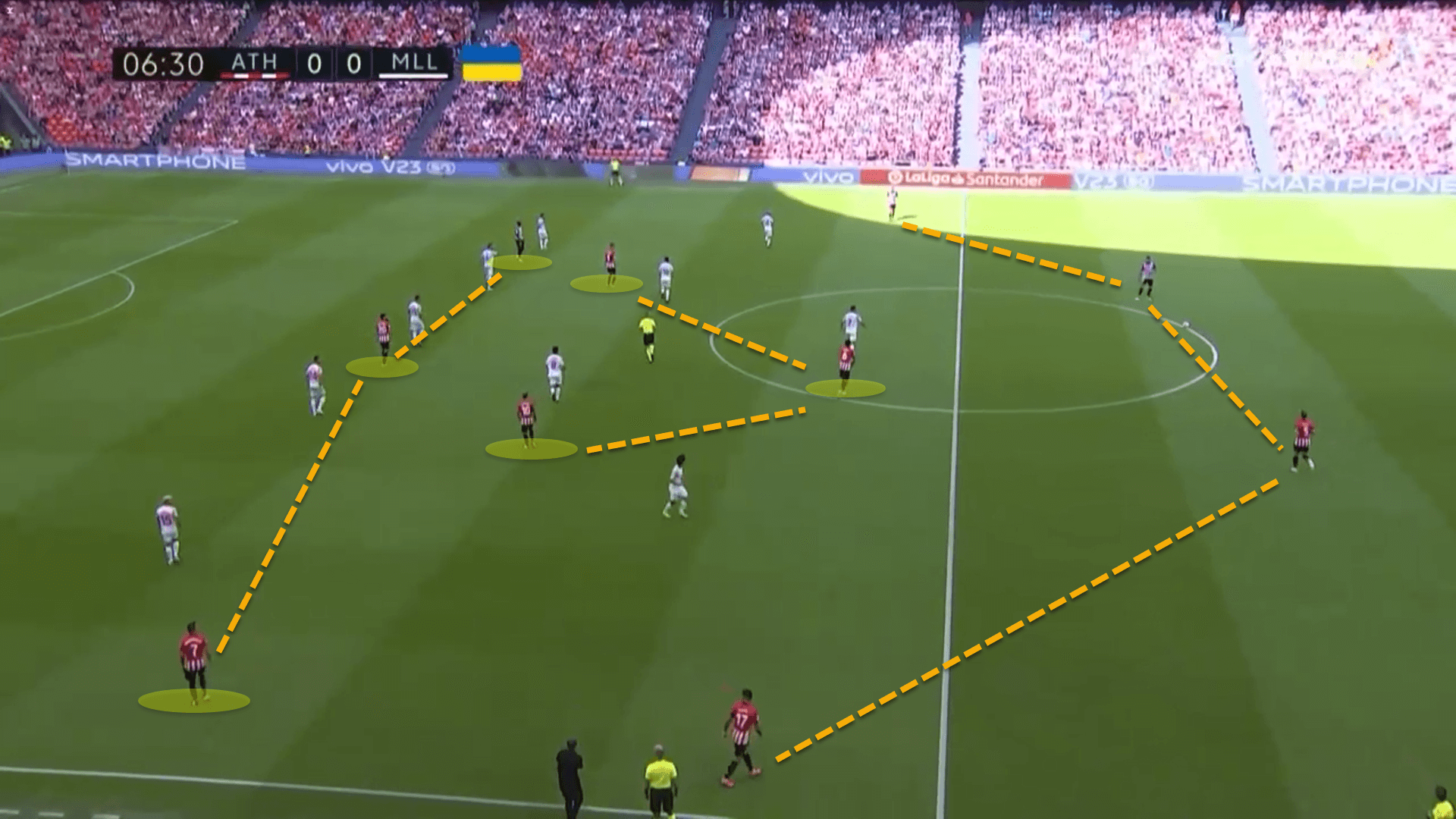
The image above displays Athletic Club’s primary attacking shape further up the pitch.
Generally, the left-winger, Alejandro Berenguer, sits wide on the left while the right-winger tucks inside between the lines.
This is because Iñaki Williams has been used as a right-winger as well as his brother Nico Williams.
The pair excel in the central spaces, making runs beyond the defensive line.
Meanwhile, the two ‘8’s push us between the lines, meaning Athletic Club have four players in this area of the pitch.
Interestingly, the fullbacks don’t advance too high up the field until the ball reaches the final third.
This can be seen from the side’s pass map:
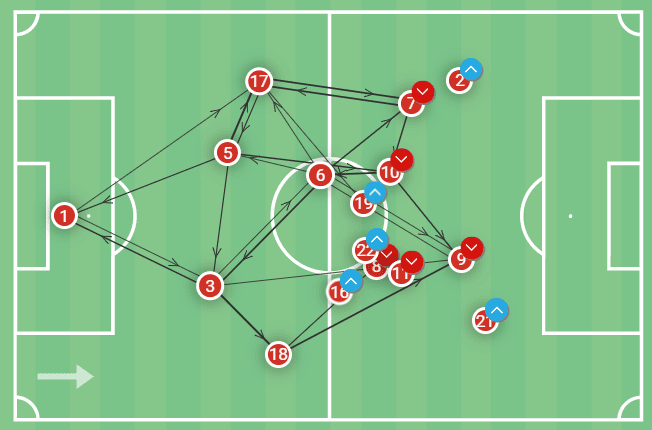
This visual portrays Athletic Club’s passing network and average positions from their 1-0 win against Valencia.
The fullbacks are very low while the midfielders and forwards are positioned really narrow between the lines, staying close together.
Often, the shape resembles a lopsided 4-1-5.
But how have Athletic Club looked to create chances within this interesting positional attacking structure?
Crosses and runs in behind
It is vital that a manager uses the strengths of the players at their disposal.
Valverde has certainly done this thus far into his tenure.
One way in which Athletic Club break down an opponent’s defensive block is by playing through balls over the top.
Using the speed of someone like Iñaki Williams is a wonderful method of doing so as the player is undoubtedly one of the quickest and most powerful forwards in La Liga.
Williams runs the channels admirably and is a simple but effective cheat code for Athletic Club to get in behind or to reach the final third.
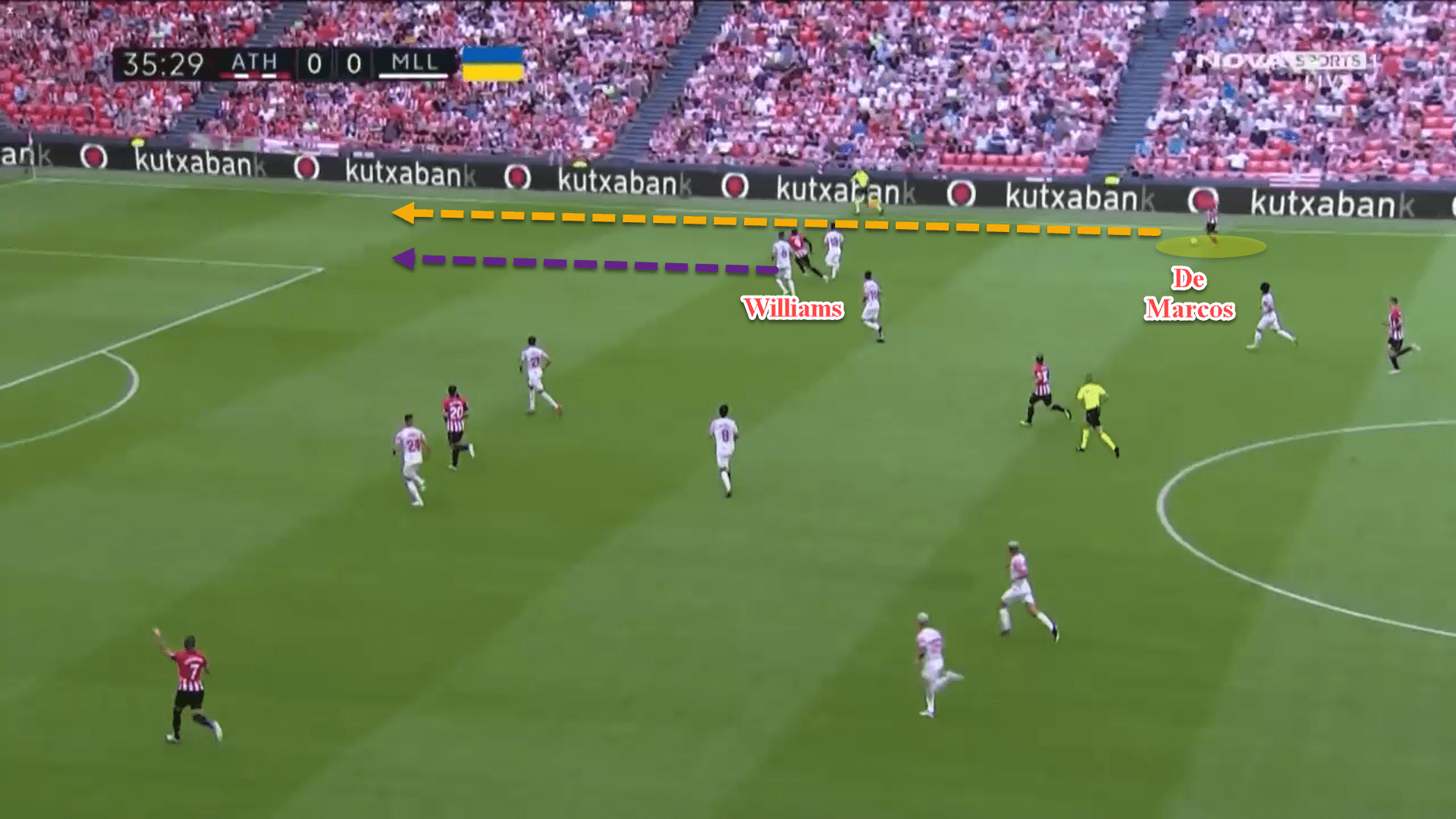
These passes can come from any player sitting in a deeper position but are most common with the fullbacks who tend to clip balls down the channels for the forwards to run into, which progresses Athletic Club high up the pitch.
Looking at Los Leones’ progressive passing map against Valencia, the ball from Oscar De Marcos at right-back to Williams was a common method of ball progression from Valverde’s men.
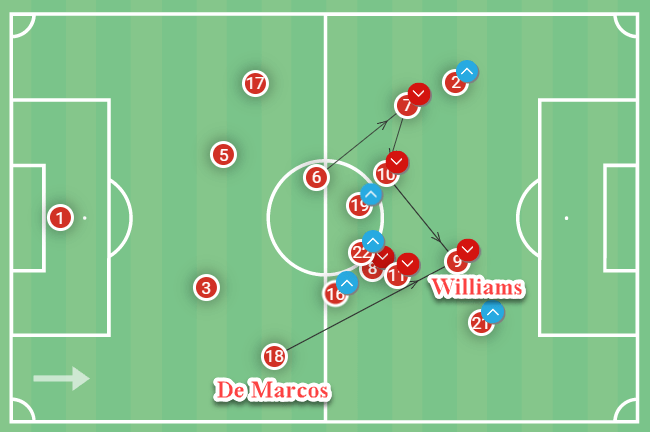
The variation to breaking down a low block to create chances that Athletic Club have used thus far under the new boss is through crossing.
This sounds rather basic, and it is, but there is also a certain formula utilised by the side to get into good crossing positions.
In the previous section, we discussed how the Basque side tend to position four players between the lines when in a settled positional attack.
The reason for this is because Valverde wants his number ‘6’ and backline to try and reach these players, who are constantly roaming in this space, looking to create a decent angle to receive the ball.
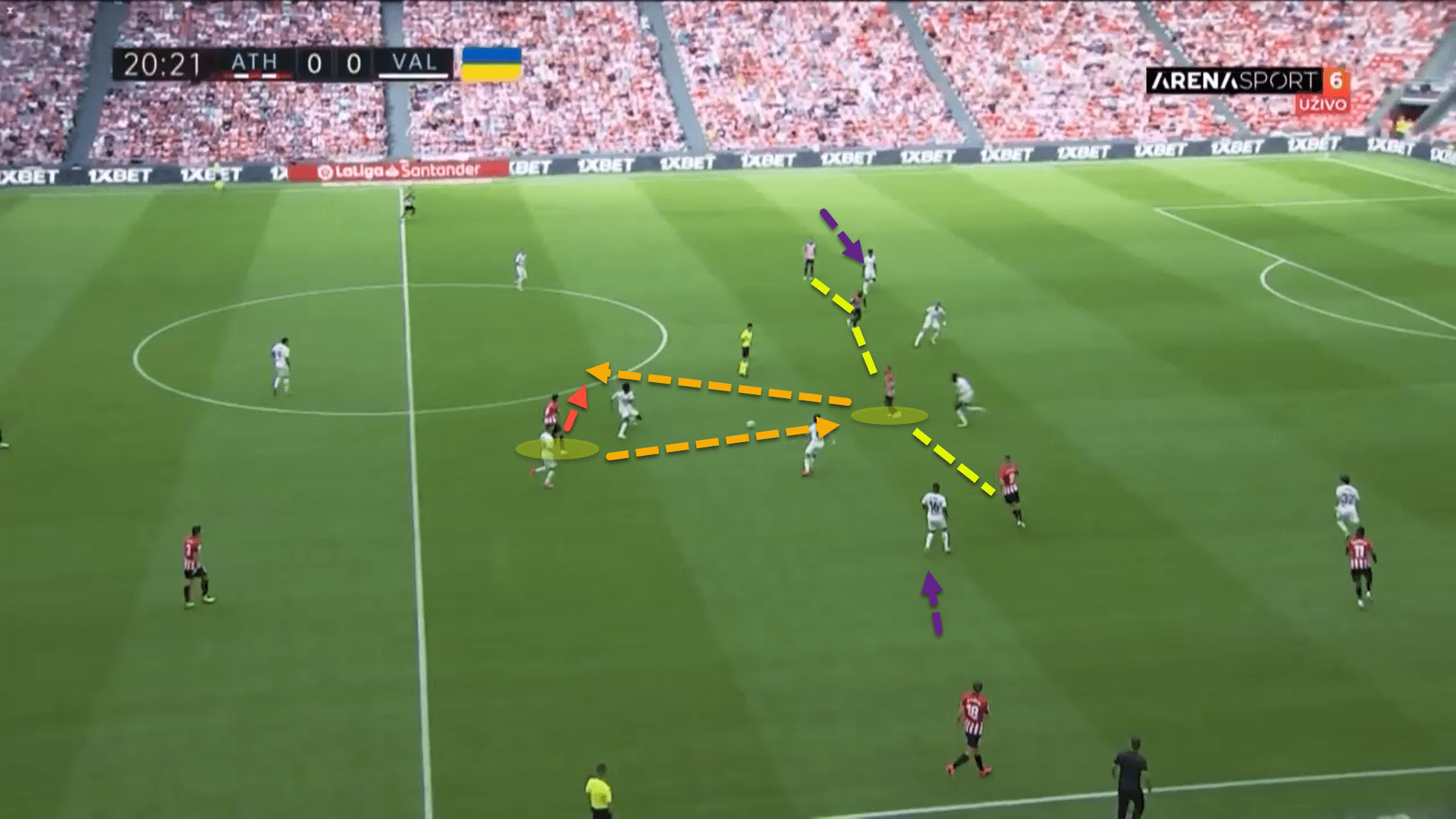
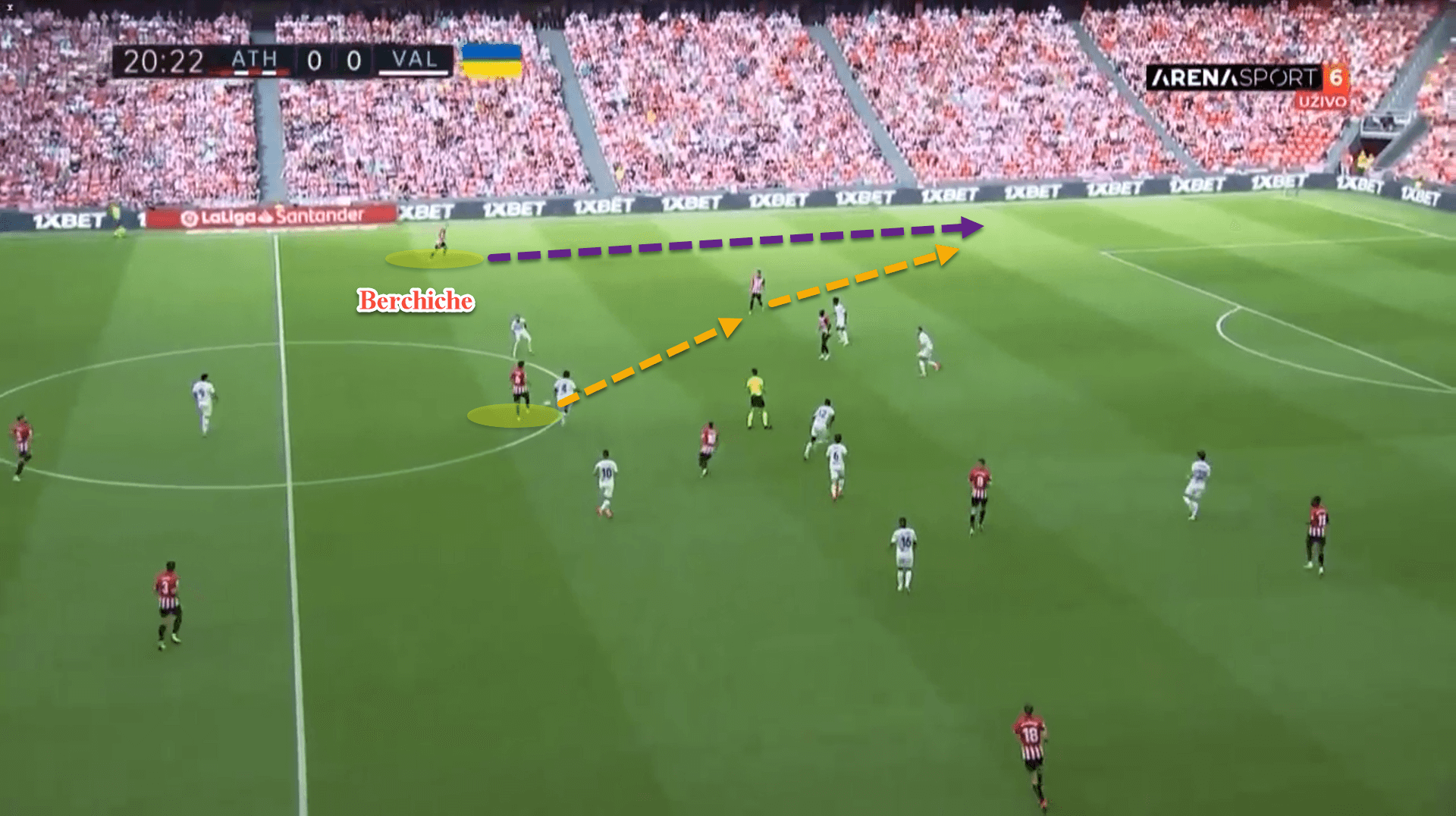
These two images are a perfect example of Athletic Club using the players between the lines to their advantage.
Vesga has played a quick one-two with Muniain in the central corridors.
Naturally, Valencia have narrowed their defensive block to condense the space between the midfield and backline.
However, this has left an awful lot of room out on the flanks.
Spotting this, fullback Yuri Berchiche makes a late run to quickly advance forward, allowing himself to get on the end of a quick switch.
In space, the left-back was able to latch onto a pass and whip the ball low and hard into the area.
The chance came to nothing but was still a warning to Valencia about the damage Athletic Club pose from these patterns.
So far this season, albeit from a miniature sample size, Athletic have averaged 18 crosses per game with a decent accuracy of 34.1 percent.
Furthermore, the side have averaged 6.29 deep completed crosses.
Their average xG stands currently at 1.74 per game, while they have actually bagged two per match.
These statistics show that goalscoring and chance creation certainly haven’t been an issue in Valverde’s early days back at the San Mamés.
Pressing traps and quick transitions
While Valverde has managed to improve the team’s tactical set-up on the ball, making them much more secure in possession, the boss has maintained the side’s excellent principles out of possession, particularly when pressing high up the pitch, which Marcelino had implemented during his reign.
Athletic Club were one of the most notorious pressing sides in Europe last season and were constantly looking to create wide pressing traps by being aggressive as a unit.
Under Valverde’s predecessor, Los Leones would press zonally, cutting off central passing options to shuttle the opposition out wide.
From there, they would trap their opponent, using the touchline as an extra defender, and aggressively close down in order to regain the ball in dangerous areas.
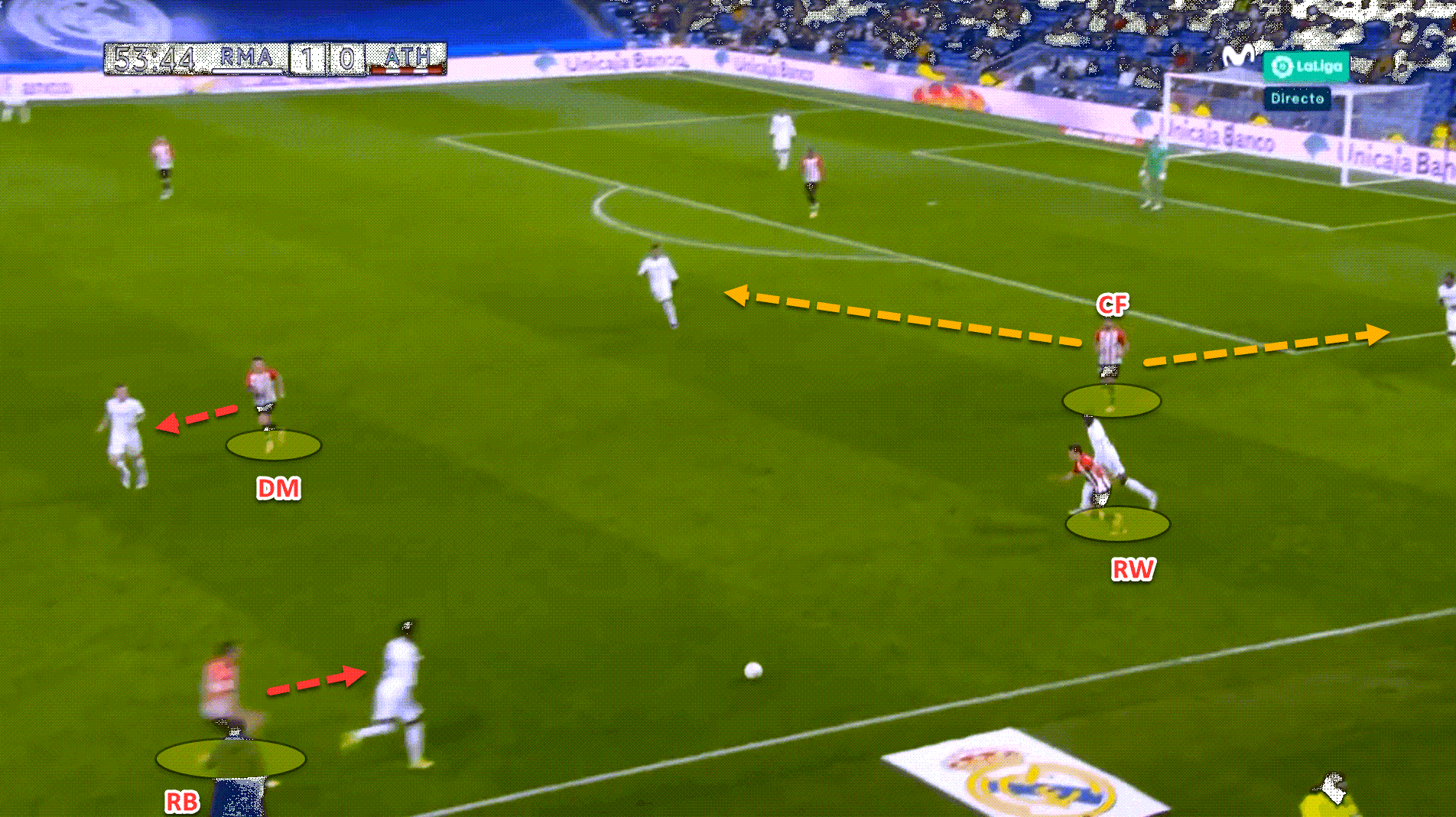
Now, since Valverde has taken the reins, the experienced coach has kept these principles intact which has already proven to be effective for the Basque club.
Against, Valencia, Athletic Club bagged the only goal of the game through a wide pressing trap.
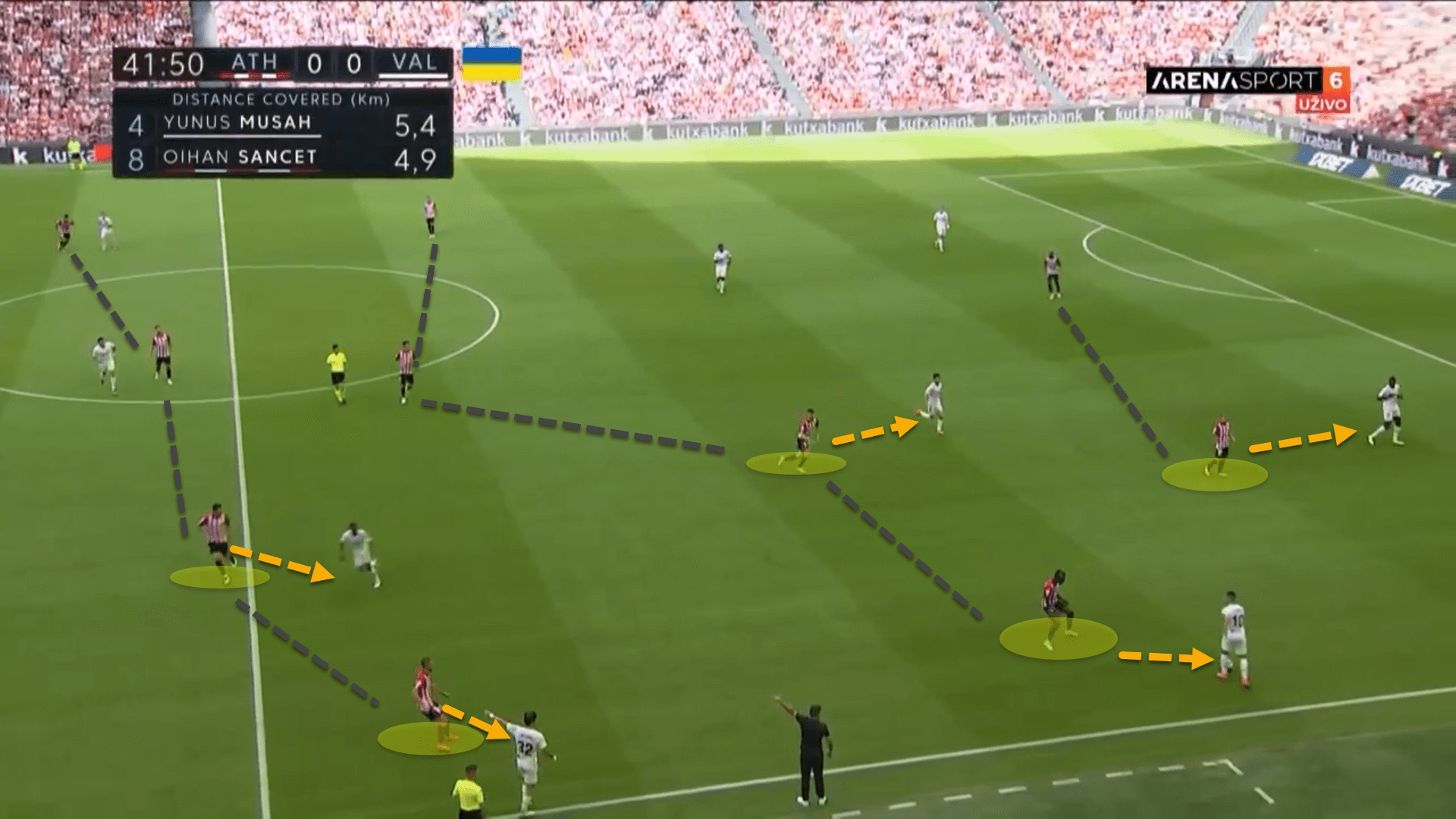
Los Che were forced wide.
Valverde’s men quickly moved over to the ball side and blocked off all passing lanes.
Trying to be savvy, the Valencia player attempted to loft the ball over the pressing trap, but this was intercepted by Williams intelligently.
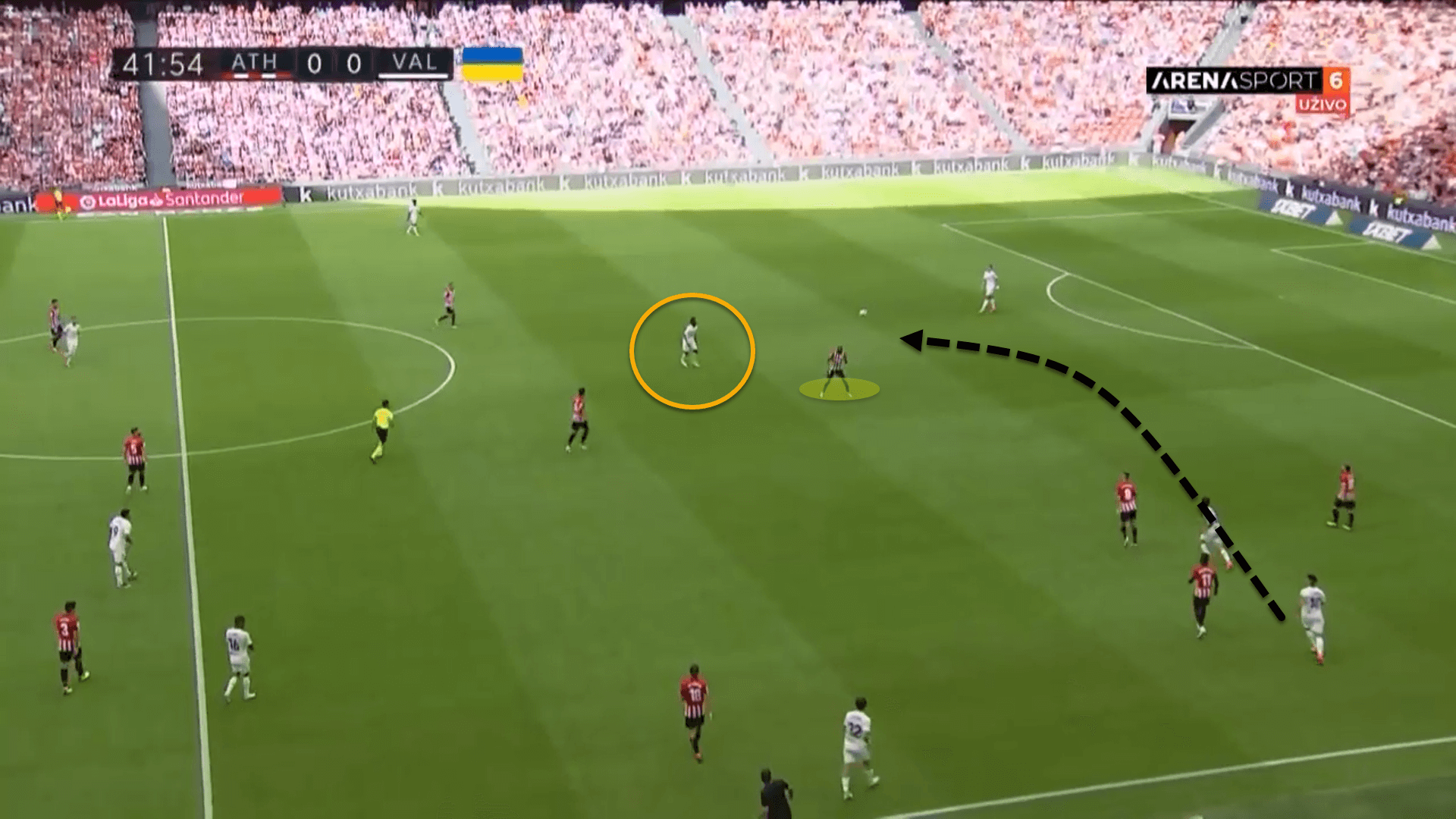
Athletic Club quickly transitioned after winning the ball back, piling men forward.
Berenguer, who eventually received the ball, took a shot from range which snuck in at the near post.
The winning goal was a nice ode to Marcelino’s work with the European giants.
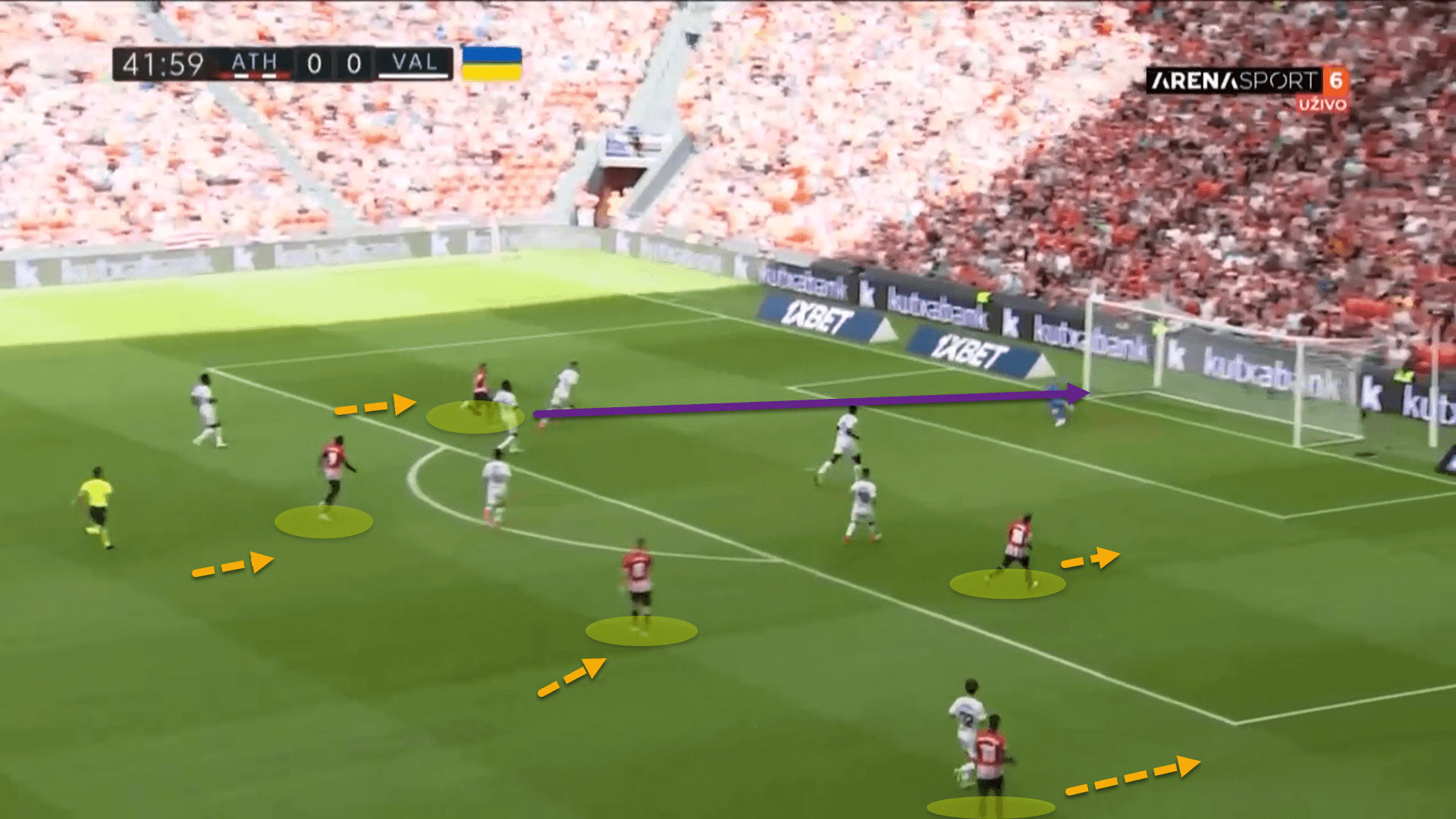
Rapid transitions have proven to be a main-stay during Valverde’s time as head coach, carried over from the former manager.
Athletic Club had been programmed to be able to defend deeper on the pitch and strike as soon as possession was won back so the new coach did not want his side to lose this ability.
In the deeper defensive phases, Los Leones are still highly aggressive, always looking to win back the ball in their 4-4-2 block.
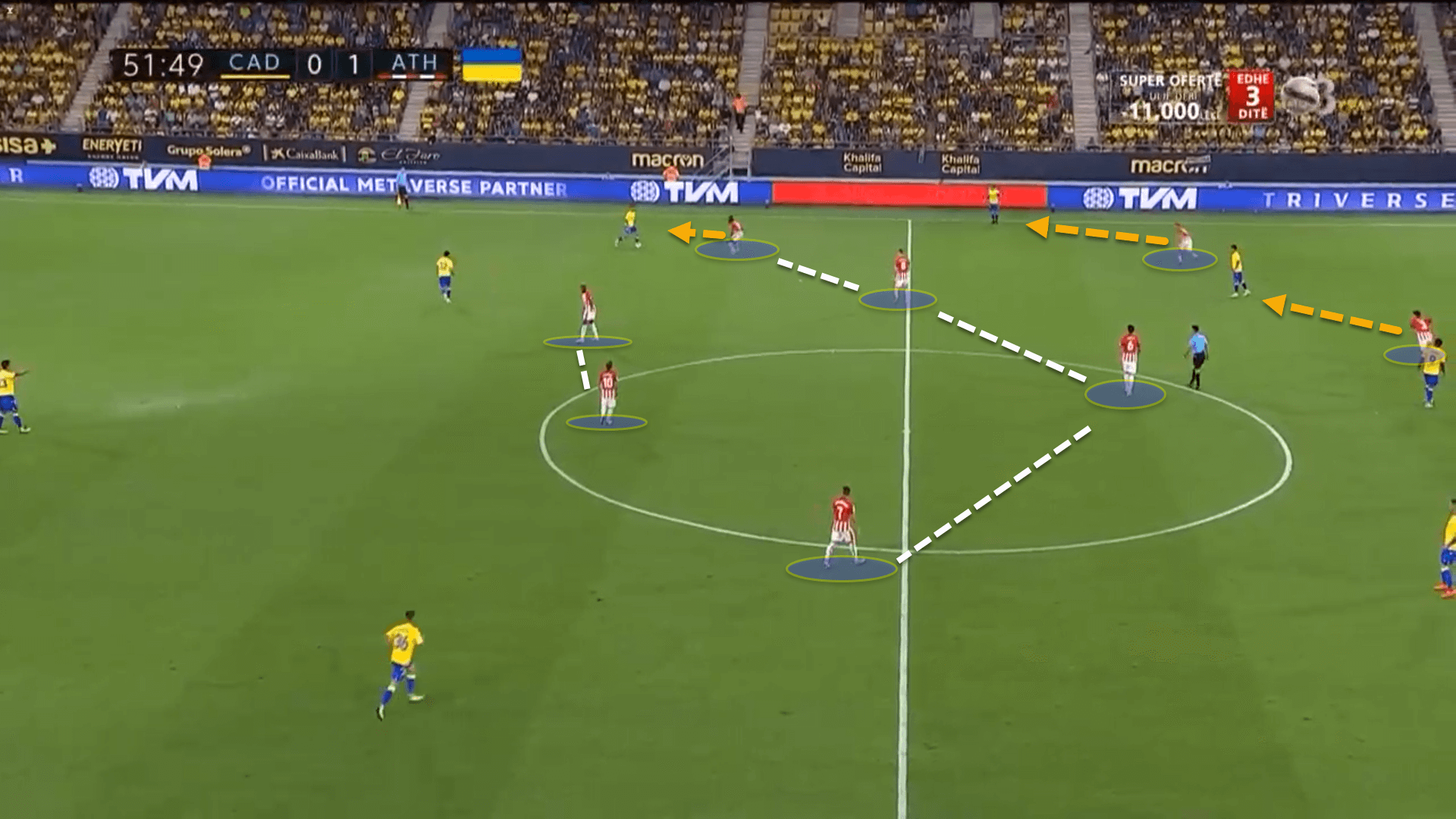
However, once possession is won back, players like the Williams brothers, Sancet, Berenguer and Muniain all use their speed and attacking prowess to make forward runs into space, hoping to score from a counterattack.
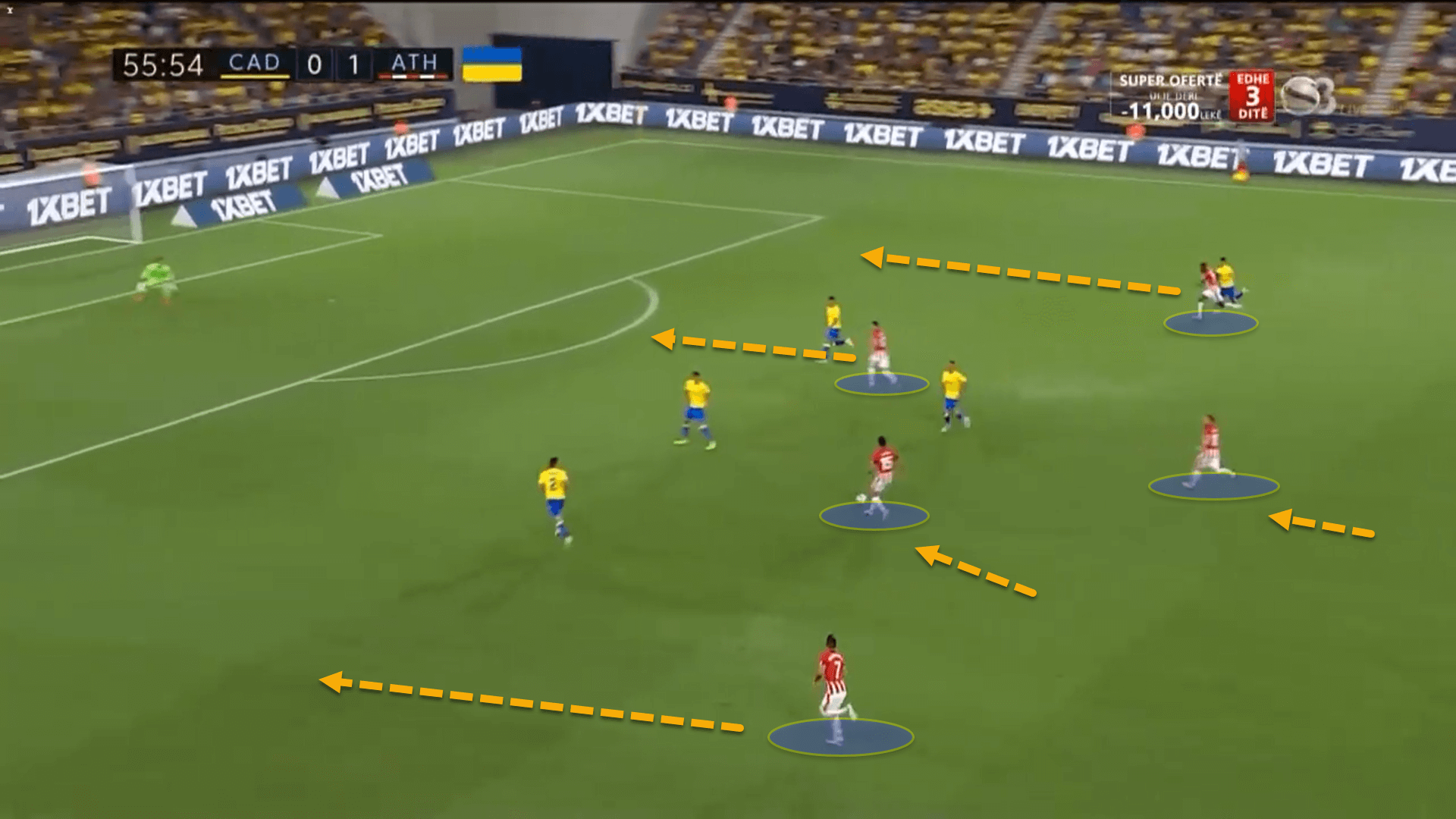
Conclusion
Valverde has managed to make Athletic Club better already.
While it’s still early days, the side look far more dangerous going forward and better equipped at retaining the ball than under Marcelino.
However, the new manager hasn’t ripped up the blueprint completely, he has merely added to it, making the Basque club look more well-rounded in their overall play on the ball especially.
There is a long way to go in the season, but supporters of Athletic Club can certainly begin to get excited by the prospect of contesting for one of the seven European spots up for grabs.






Comments